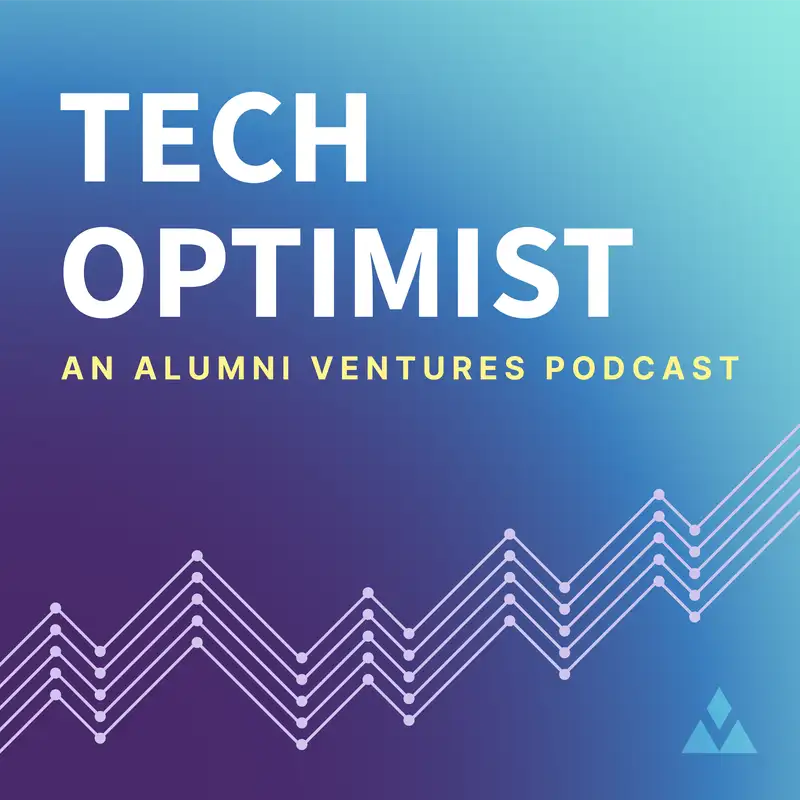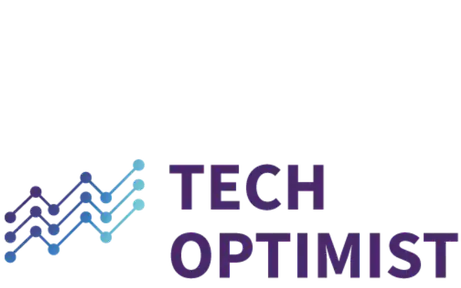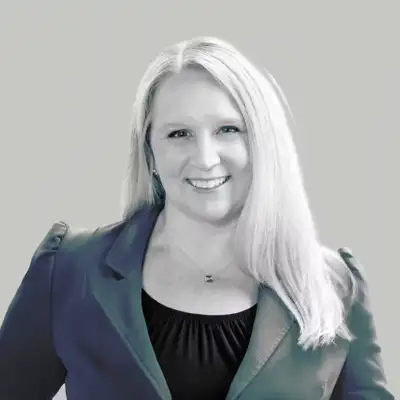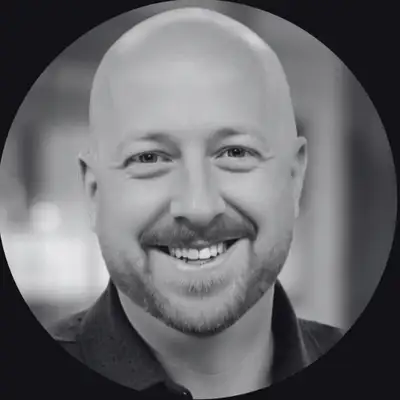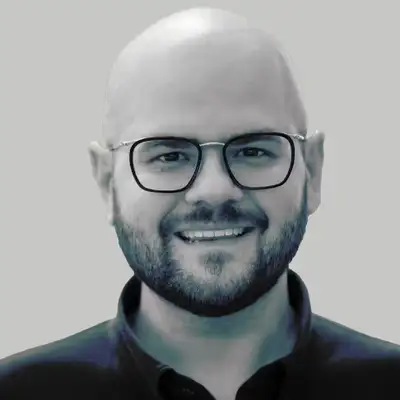#48 - Three Breakthroughs: Tech Bro Cities, Making Money in Space, and AI Recruiting Is Already Here
Sam Herrick:
A utopic city in California, moon caves and AI hiring. We got a good one for you. Hang tight.
Michael Peri:
But also given where we invest, Mike, it's the perfect showcase for the future of energy usage, energy storage, how you actually bring these somewhat theoretical advances in technology into everyday living. Investing in space isn't just sci-fi anymore. There are real use cases.
Mike Collins:
Careers are going to be made, legends are going to be made. The most valuable companies in the world are eventually going to be ones that master space. So we're going to play, that's for sure.
Sam Herrick:
Hello, welcome back to this episode of the Tech Optimist. We have a Three Breakthroughs episode for you today, and we have the classic hosts behind this episode and behind this segment of the show. We have Mike Collins, Founder and CEO at Alumni Ventures. And then of course we have his partner in crime for this segment for a few weeks, Michael Peri. He's a Partner at Alumni Ventures. And then you'll probably recognize my voice. My name is Sam and I'm the guide, editor and narrative curator for this podcast. So I'm going to give you a little bit of snippet on what the two are talking about today.
So first topic that they bring up is about the California Forever Utopia City. Now they sort of talk about then what it means to build a utopia city, how it affects new technologies and new investments and new companies that could spring up because of all this new needed technology. It's a cool conversation. And then second breakthrough, we talk about the network of caves on the moon. So then these guys talk about how important it is to invest in space in the future and how important it is to get into the space sector. And we sort of talk about lava tubes, so that's also a cool thing to look forward to.
Then the last breakthrough today is AI and hiring practices. Now Mike and Mike kind of talk about what that means for the future of hiring and any potential biases that are there or that could come up with a sort of AI technology being the brain behind it all. So I'm going to stop yapping and let's get right into the episode. Hang tight and we hope you enjoy. As a reminder, the Tech Optimist podcast is for the informational purposes only. It's not personalized advice and it is not an offer to buy or sell securities. For additional important details, please see the text description accompanying this episode.
Mike Collins:
Hey, and welcome to this week's episode of Tech Optimist, Three Breakthroughs. I am joined today by Mike Peri in our Chicago offices, and I'm Mike Collins. I am the founder and CEO of Alumni Ventures. And on this show I get together with one of my colleagues to talk about interesting technologies that are happening and are potentially investible for us. So Mike, how are you doing?
Michael Peri:
Doing great. Excited to talk today. I feel like we have a lot of timely subjects to discuss, so I'm happy to kick it off if you [inaudible 00:03:35], Mike.
Mike Collins:
Yeah, kick it off. What do you got?
Michael Peri:
All right, so first in recent news, I really want to talk about this exciting development that could change the way ... how we think about urban living and urban planning. So want you to imagine a community that's going to combine all the cutting edge technology that you're hearing about in terms of sustainable practices, just modern living, really fascinating to me and not surprising, fascinating to Mark Andreessen and his family, as they're aiming for a new subdivision near the proposed California Forever utopian city.
So in my mind, a lot to be excited about here and a lot to just think about what this means for policy engaging community. So at a high level, what's going to make this unique is first and foremost, it's going to go beyond just building homes. It's really about integrating smart technology and sustainable infrastructure to just straight up enhance quality of life.
So you can imagine this neighborhood where, yes, your houses are energy efficient, the streets are designed to reduce traffic, there's abundant green spaces, you have a sense of communal living. But also given where we invest, Mike, it's the perfect showcase for the future of energy usage, energy storage, how you actually bring these somewhat theoretical advances in technology into everyday living.
So for me, I saw this and I was like super cool kind of mantelpiece of what it can do, but I'm really hopeful that it'll start to pull through into just regulatory thinking, the future of what planning looks like in cities, even rural planning. There's a lot here that I think we can lean on into and say this is going to be the future of living. All these innovations we've seen and we've invested in will need to find their way into everyday life. And it's fascinating to see some of these early groups that are coming together and saying, "Here's an example of this. We're going to be the first to do it and hopefully we can replicate from there."
Mike Collins:
What I love about this is experiments are good, right? And we've had a long human history of kind of utopian societies that usually don't pan out as utopian, but it still moves the ball forward a bit. I think we have seen with big technology shifts like the automobile, some real positives, and then there's some things, the kind of suburban trend and the gutting of some of our cities and downtown areas, and the railroad and how it impacted certain towns when the highways came by.
Again, that's the story of progress. And with all these technologies that we're so excited about from self-driving cars and distributed grids and innovation and energy, it is going to impact how people live where they live. We need people trying new stuff and we're learning from things that work and tossing out things that don't. And whether these particular things I think are powerful in that folks with money and folks with power and folks willing to push the envelope are trying radical new approaches.
That frankly is how it moves it ahead for everybody. So it's like I wish we had more of these experiments going on in more places and at different scales, because I think there is a lot of potential in where we live, how we live, urban density issues. This whole suburban McMansion thing has some real drawbacks and so I am all for it. So it's one worth watching.
Michael Peri:
Yeah, definitely. I mean, at the end of the day, at a minimum it's going to force the engagement at a community level. How do we think about this stuff? How do we engage with one another about it? So definitely-
Mike Collins:
These are trade-offs of values kind of thing. And then money and cost and affordability and access and all of that matters. So thumbs up for more experiments for sure.
Michael Peri:
Yeah, for sure.
Sam Herrick:
As far as experiments go within city planning and architectural representation and design, some of you may know from listening to this podcast that I have an architectural background and part of my education in Boston within the education structure, there's a lot of learning about architectural history and failed projects or attempts. And one of my favorites that I've seen firsthand is Eero Saarinen's 1948 landscape design that surrounds the Gateway Arch in St. Louis Missouri.
So I personally have seen in the museum underneath the arch is a massive architectural model, right? It's a two-scale model of the city and what Eero Saarinen wanted to design along with the arch. Again, spoiler alert and never ended up happening, but just seeing a physical representation of someone's idea in this utopic kind of environment that he wanted to provide the city of St. Louis reminded me of this breakthrough that Mike brought up.
So I also found a really good journalistic style video by TechCrunch that kind of digs into this breakthrough a little bit more, and a little bit more about the story behind this utopic city and behind California Forever, this other company that's involved in this sort of utopic thing. So I'm going to play that really quick and then we're going to do an ad and then we're going to go right back into Mike's breakthrough for this episode. So hang tight.
Amanda Silberling:
Over the last several years, a hot shot crew of billionaire tech investors have been trying to build their very own utopian city through a real estate developer called California Forever. With supporters like Michael Moritz, Reid Hoffman and Mark Andreessen, this project sought out to create a walkable city that could house up to 400,000 people building on 60,000 acres of land north of San Francisco. But the project hit a serious speed bump last month when California Forever withdrew a ballot initiative pulling voters on the new city, instead opting to file an environmental impact report and try again in 2026.
Andreessen might not want to wait though. TechCrunch learned this week that the venture capitalist's family is planning another community in the area as well using land that his wife's real estate mogul Father, John Arriaga Sr., purchased decades before his death in 2022. Arriaga Sr. bought up land in the Bay Area and built office buildings before Silicon Valley was even a thing, laying the groundwork for his family's fortune. California forever is doing something similar.
TechCrunch reporter Margo McCall writes, "California Forever's strategy mirrors Arriaga's. Both targeted cheap agricultural land, both operated largely in secrecy, and both set out to establish metropolises before there was any obvious demand for them." These developments sound amazing on paper. They're walkable cities with lots of green space, good schools and effective public transit, but the California Forever Project has been controversial among existing residents of Solano County.
Congressman John Garamendi argued that there is not enough space for 400,000 residents, and that the nearby Travis Air Force base could be negatively impacted. Plus the developments could strain local water supplies and raise infrastructure costs. So it's probably a good thing that California Forever took a step back to figure out how to address these issues before putting the proposal to a vote.
The Arriaga family's development plans are a bit less intrusive. The land totals around 730 acres and the plan thus far is to build 1,000 homes. The end goal of building this development would be to sell it, whereas California Forever seems intent on developing some sort of techno utopia. So is this a situation of a son-in-law following in his father-in-law's footsteps? We'll have to wait a few years to find out.
Pete Mathias:
Hey everyone, just taking a quick break so we can tell you about the US Strategic Tech Fund from Alumni Ventures. AV is one of the only VC firms focused on making venture capital accessible to individual investors like you. In fact, AV is one of the most active and best performing VCs in the US, and we co-invest alongside renowned lead investors. With AV's US Strategic Tech Fund, you'd have access to an investment portfolio focused on technologies that are critical to bolstering US national security and economic prosperity.
We prioritize three key areas, homeland security, cyber AI and digital strategy and space innovation. By investing in companies innovating in these areas, you can support early stage ventures and help encourage sustained growth and technological progress in the United States. If you're interested in learning more, visit av.vc/funds/strategictech.
Michael Peri:
All right, Mike, what do you have?
Mike Collins:
Yeah, I mean, this one's a little dated. I mean, we're here what, 28th of August, and this came out a few weeks ago, but I've just been meaning to talk about it, which is basically finding this cave on the moon, right?
Michael Peri:
Oh yeah. Okay. I remember. Yeah.
Mike Collins:
And is that a thing or not? Who knows? We've also had the astronauts get stranded in space. We're going up for a couple of weeks, hon. No, I'll see you in February king of thing.
Michael Peri:
Yeah, can you imagine that? I'll be back over the weekend.
Mike Collins:
Yeah, yeah, it's just like [inaudible 00:14:50] next week.
Michael Peri:
Yeah, exactly.
Sam Herrick:
Okay, so in regards to Mike Collins' breakthrough, we have a article from NASA directly that's titled New Evidence Adds To Finding Hinting at Network of Caves on the Moon. First off, that's just a bonkers concept, right? I had thrown the article header a little bit earlier, but I wanted to read a little bit of this article for you guys because it is so cool. And then also as well, there's a really cool YouTube video that they shared on this article by NASA 360 called Lava Tubes Science Beneath the Surface of the Moon, which is about only a minute and a half, which I also wanted to share. So that will come up right after this.
But a snippet from this article written by Lonnie Schetman. This came out in July of this year, "An international team of scientists using data from NASA's LRO, Lunar Reconnaissance Orbiter, has discovered evidence of caves beneath the moon's surface. And reanalyzing radar data collected by LRO's mini-RF, Miniature Radio Frequency, instrument in 2010, the team found evidence of a cave extending more than 200 feet from the base of a pit. The pit is located 230 miles northeast of the first human landing site on the moon. The full extent of the cave is unknown, but it could stretch for miles beneath the surface."
The mini-RF is operated by the Johns Hopkins applied physics Laboratory in Laurel, Maryland. LRO is managed by NASA's Goddard Space Flight Center in Greenbelt, Maryland, for the science mission director at NASA headquarters in Washington. Launched in June of 2009, LRO has collected a treasure trove of data and its seven powerful instruments making an invaluable contribution to our knowledge about the moon.
NASA is returning to the moon with commercial and international partners to expand human presence in space and bring back new knowledge and opportunities. That's that sort of technology that I mentioned a little bit earlier, but here's that YouTube video that I was talking about, and then after that, we're going to do the last ad. Again, this video is really cool. Hang tight. We'll be right back.
Jake Bleacher:
The moon originally was a big ball of magma. Through time, as the crust formed on the surface, the magma on the interior also slowly leaked to the surface. A lava tube is essentially a cave, an enclosed tunnel through which lava flowed, and if it was able to drain out, you now have this open cave through which you can conduct some interesting scientific experiments.
Here on earth, a research team studies lava tubes as a means for better understanding how we can explore and understand lava tubes on other planets and the moon. From some of our high-resolution images from the Lunar Reconnaissance Orbiter, we can actually see pits on the surface of the moon, and it looks like these could be the extensive lava tube networks.
So they could be pathways that are tens to hundreds of meters long. They could be kilometers long. Understanding lava tubes, where and when they formed on the surface of the moon is just a really exciting scenario. These caverns have been protected from the space environment. So this really would be an ideal place to try and collect samples that tell us not only about the moon, but about the solar system in general and how it's evolved through time.
Our next step is starting to plan robotic exploration of the moon again, and this might involve observations that would help confirm the presence of lava tubes or some of these subsurface void spaces. They may even be accessible by robots, or in the future maybe even humans. To me, it just makes them a very interesting and exciting aspect to studying the surface of the moon.
Speaker 7:
Do you have a venture capital portfolio of cutting-edge startups? Without one, you could be missing out on enormous value creation and a more diversified personal portfolio. Alumni Ventures ranked a top-20 VC firm by CB Insights is the leading VC firm for individual investors. Believe in investing in innovation? Visit av.vc/foundation to get started.
Mike Collins:
But it's the bigger picture of space and investing and people, because there's some pretty high profile people and some billionaire space tourism going on, I think people are ... they've lost the line a little bit, that this is actually a very important place where real innovation is taking place and infrastructure is being built.
I was with a group of very young venture capitalists just starting out in their careers, and they're all looking to make their name in something kind of thing. If you're 26 and looking to be in this space for the next 40, 50 years, it feels early but it's not. Space is definitely one that would be on my recommended list to get to know, figure it out, figure out where the technology stack is, where it's going, who's going to make money, who's going to be kind of a pioneer that gets killed.
There are things that are not 40 years away here. There are people that are making money in communications, making money in materials, payload, and it has legs. I mean, one thing about space is it's an almost infinite possibility of new and investing, and again, probably beyond my life, but in future generations it's a little bit like I went through the phase of like, "Oh, we're going to do an internet fund or something," right? But it's just like, okay, that is just imbued in all investing now.
I just think, again, space is going to become one of the places that everybody just is like, "What's the next thing in space? What's the next thing in space? What's the next space?" And so I think it just has long legs and a big tail. And so I just, we're an active investor in it. Do you want to talk about a couple of things from your [inaudible 00:21:31]?
Michael Peri:
Yeah.
Mike Collins:
We'll have Sam put up more on our screen.
Michael Peri:
From Axiom to Impulse to Cesium. Yeah, I think what's fascinating, and you're communicating this in the way that I too engage my peers or folks that are generally interested. It's like investing in space isn't just sci-fi anymore. There are real use cases. Yes, I think you default to the defense use cases and the primes that are there and how you could potentially disintermediate or innovate around it. But you're also seeing turn off gravity and go manufacture new pharmaceuticals in space. That's known research.
There are clearly the amount of materials that you could bring down to actually say, "Hey, this is a more sustainable way of mining potentially." The whole point is there are equally as many commercial use cases as I think there are government, and we're only starting to see that. I think of the work like Pete and Drew are doing on the strategic fund, really putting a name out there for ourselves, getting in high caliber deals, but also AV in a whole, being able to describe what these deals are, why we're excited in a way that resonates with the everyday person.
I think the more we can do that, and certainly our peers in the industry are doing the same, I think it'll just exponentially grow what we're able to accomplish in space, beyond putting on your sci-fi hat. Like, oh, what else are we going to do out there? It's very real things and very real benefit.
Mike Collins:
And that's again, what we're trying to do here at AV is just with the goal of democratizing and bringing more people into this asset class, part of our job is to kind of just share our excitement about real businesses that make real money that can be a great investment and really fascinating technology that just is improving things with communications or data or understanding of science that leads into making human lives better.
Michael Peri:
I mean, yeah, a little bit of a scary use case, but astronauts are stranded in space right now. Now we have a lot more optionality, a lot more service providers that we can engage with to. That's a very real time, I think. Interesting use case, but it's demonstrating just what we're doing up there, the capability of intersecting both public and private sectors to not only innovate but partner together to just accomplish whatever mission it is that they set their minds to.
Mike Collins:
Yeah, and again, I'm writing a paper right now on just some of the areas we're investing in that are seeing kind of geometric changes. And obviously we've seen that for a long time in compute, I think. And another chart I looked at recently was just kind of payload costs. What does it cost to get something in space? And we're on kind of a Moore's law kind of thing, which is just more options, more commercial stuff, reduced cost.
Elon's done amazing work there and I think NASA's pretty happy that they didn't sole source something when it came to moving people around up there. So again, the role of the private sector and innovators and risk-takers and capital and the profit motive, the stuff works. There is a role for government and there's a role for the private sector, and that includes in space. And we are just, again, careers are going to be made, legends are going to be made. The most valuable companies in the world are eventually going to be ones that master space. So we're going to play, that's for sure.
Sam Herrick:
Okay. And of course, just like this last Three Breakthroughs episode, I have been requested by the internal AV team to supply some of those companies in the AVPortCo that are within this sector, within the space sector, and are doing some really amazing things in space, and just space technology and stuff. So we have had Impulse Space on the podcast before. That was an awesome episode if you want to go back and listen to that. But that was with Tom Mueller, SpaceX's first employee. It was a really cool conversation around SpaceX and everything.
But Impulse Space is a startup that specializes in developing advanced in-space transportation and propulsion technologies. They have their technology, their key products like Mira, Helios and just general rocket engines. And then we also have another company called Cesium Astro, which is a startup that specializes in developing advanced communication technologies for aerospace applications. Their core technology is they design and manufacture software-defined phased array communication payloads. And these systems are used for airborne platforms and in-orbit satellites and spacecraft.
So their technology optimizes radio communications between space, air and ground assets. Their key products are the Nightingale series, the Compaq, the SDR 1001 Phased Array Systems. And then another company, the last one we're going to talk about today is called Axiom Space. They were founded in 2016, and they are a pioneering company in the commercial space industry. This focuses on a few areas. So they focus on space station development, human space flight services, research and innovation, spacesuit development and commercial space access.
So they're developing the world's first commercial space station known as the Axiom station. And this plan includes constructing modules that will initially attach to the ISS, eventually detaching those modules to form independent fully commercial space stations targeting late 2026 for the launch. And they're aiming for completion by the late 2020s. So super exciting, super innovative stuff coming out of all three of these companies. And we definitely recommend giving them a dive if you are interested. But let's round off the episode with the last breakthrough and then we'll go from there. All right, hang tight again. Thanks.
Mike Collins:
Okay, Mike, what's your third one?
Michael Peri:
All right, talking about careers and stepwise functions and change. This is fascinating for me. It's an area that I like all things that sell into employers or benefits. I think they're really nice solutions that could be bought, not sold in that space, but the AI day of reckoning is coming, I think, in transforming hiring practices. So we've seen numerous companies in this space.
I'd say any day you're kind of browsing the broader internet, you're going to see something about a new AI interview software and how it's going to fundamentally change how companies are evaluating candidates. Really also raising important questions, I think about fairness and effectiveness. It's been top of mind for me, as you can see in the earnings and everything going on at the economy lately, missed the mark quite a bit on jobs.
I think a lot more people are sitting on the sidelines saying, "I'm applying to a bunch, I'm not seeing anything." And I think that's a really fascinating topic to think about, because there's definitely growing trend in using AI-powered interviewing. So these are going to do everything from automating the early stages of the hiring process. So it could analyze video interviews, it can assess candidates responses, body language, even tone of voice to provide insights into the suitability for them and the role.
So face value for sure very fascinating, going to provide incredible operational leverage, making hiring way more efficient, and really being able to identify the best candidates. However, I'd say this is a trend that's not going to come without its challenges. I think we're going to face a lot of critique and argument around how AI systems are reinforcing potential biases and disadvantaging candidates based on ... it could be appearance, accents or other factors totally unrelated to job performance.
So this is one we're monitoring from an investment standpoint, and just one I enjoy engaging people about, because it is one of these core, is AI going to do too much? Is a human in the loop a good thing? I think this is a prime example of that.
Mike Collins:
No, I think it's a great microcosm of what is going to be an area of constant discussion over the next 10 years. And this is one very in the near term and in the now. These things are happening now. And listen, it's walking a line. First of all, hiring is such an art and so full of bias already that the bar is actually very low to have a more fair, more equitable and more productive system using software. Humans judging other humans is one of the most fraught, biased, rich things that you could ever ask a human to do.
Michael Peri:
Mike, this is a topic for another day, but do you remember it was years ago, the study that was published about judges and how they're like, "I need to see the person." And they're like, "Actually, that's not meaningful whatsoever." And if anything, it actually brought more bias [inaudible 00:32:02].
Mike Collins:
The example that I'm familiar with, I believe was a music competition. I think it was on gender. And what they found is by putting the person behind a curtain that the results were very, very different. And so I'm inclined to think that this is an area of rapid improvement very quickly and a great application for it. Surely the software will not be perfect, the AI will not be perfect, but like self-driving cars, the standard should not be perfection.
The standard should be materially better than what the alternative is. And we have just known from study after study, people make their decisions on hiring very emotionally, very much a preference for hiring people like them. And not just in physical characteristics, but in style and body language and posture and all of this kind of stuff. And so sign me up.
Michael Peri:
Yeah, I'm with you. I think it defaults real fast to policymakers and industry leaders are going to have to come together and collaborate around this because it's going to be ... you have to audit for bias and clear standards. And you could just take that same argument and reframe it a little bit and you're like, yeah, but you could also tune this to identify things that you would never do anyway, right?
Mike Collins:
I mean, I'll just give you an example of that, which is I think that there's huge bias toward going to fancy schools, and that that is probably an area that is over-indexed in our society. And it's like, "Oh, Mike Collins went to school X, Mike Perry went to school Y." There's all kinds of biases that kind of get carried along with that. Most of that is, yes, there's applications and credentialing and all that does go on, but it's over-indexed probably, right?
Michael Peri:
I agree.
Mike Collins:
And could an AI system look at work quality, those kinds of things? So I just think this area of evaluating, of recruiting, of coaching, which is another thing that can be on the positive side, which is how does Mike work with Joe? Okay, this employee is struggling. How can an AI coach them to present better or those kinds of things. So at the end of the day, I've said this, I said this to my board recently, which is, and this was in the context of leaders of companies using AI themselves, in the context of having an AI assistant that helps them with their jobs, whatever that is.
And I basically said, "I think very shortly there's going to be two types of founders, two types of CEOs. There are going to be AI assisted and former." And so I think that that's the world we're going to work in. And very just bringing it right back to this point is if somebody's heading up HR, people in culture, their career move is to get really good at picking these systems, using these systems, balancing these systems out with human touch and editorial, letting the computers do what computers do well, letting humans do what humans do well.
So yeah, I think it's a fascinating area, and like you point out, I think it is a microcosm of conversations we're going to have over and over and over again in the coming years. But very exciting stuff. All right, Mike. Excellent.
Michael Peri:
Awesome.
Mike Collins:
Good conversation and we'll do it again next week.
Michael Peri:
Yeah, talk to you next week. See you Mike.
Mike Collins:
Bye.
Sam Herrick:
Thanks again for tuning into the Tech Optimist. If you enjoyed this episode, we'd really appreciate it if you'd give us a rating on whichever podcast app you're using and remember to subscribe to keep up with each episode. The Tech Optimist welcomes any questions, comments, or segment suggestions. So please email us at info@techoptimist.vc with any of those, and be sure to visit our website at av.vc. As always, keep building.
